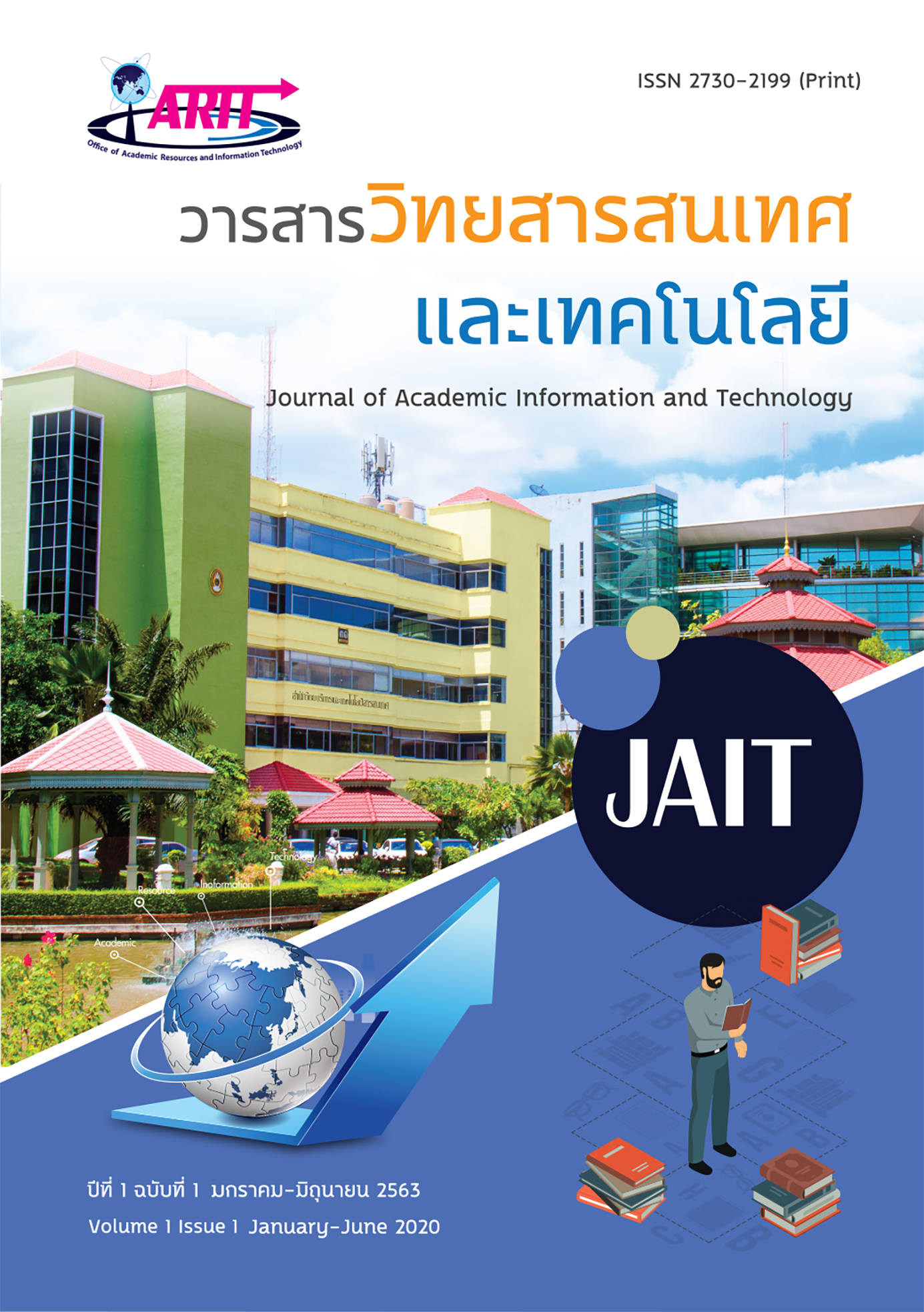The Teaching in Information Literacy Course Based on Games and Activities
Keywords:
Teaching, Information Literacy, Games, ActivitiesAbstract
Active learning is the teaching method that Nakhon Sawan Rajabhat University requires lecturers to use in their teaching courses for the development of students essential 21st century skills. By using this method, students will participate more in class, learn better, and become more satisfied in the learning process. At the same time, instructors will lecture less and change their role to be advisors. To teach Information Literacy Course using game-based teaching and active learning methods, the author created many games and learning activities, including matching game about information resources, reference books using activity and references format puzzle game. Most students are more satisfied with these teaching methods than the lecture only. However, there is no formal learning achievement measurement.
References
จันทร์ชลี มาพุทธ. (2546). การศึกษาศตวรรษที่ 21: ปรับวิถีคิดของครู ผู้ปกครอง และนักเรียน. วารสารศึกษาศาสตร์, 15(1), 1-4.
ณรงค์ กาญจนะ. (2553). เทคนิคและการสอนเบื้องต้นเล่ม 2. กรุงเทพฯ: จรัลสนิทวงศ์การพิมพ์.
ทิศนา แขมมณี. (2550). ศาสตร์การสอน: องค์ความรู้เพื่อการจัดกระบวนการเรียนรู้ที่มีประสิทธิภาพ. กรุงเทพฯ: สำนักพิมพ์แห่งจุฬาลงกรณ์มหาวิทยาลัย.
เทพประสิทธิ์ กุลธวัชวิชัย. (2554). การนันทนาการ. กรุงเทพฯ: สำนักพิมพ์แห่งจุฬาลงกรณ์มหาวิทยาลัย. นายกฯ จี้ครูปรับวิธีการสอน. (2561). สืบค้นจาก https://www.dailynews.co.th/education/658192
ปรีดี ปลื้มสำราญกิจ. (2560). ทักษะในศตวรรษที่ 21: ทักษะจำเป็นสำหรับนักศึกษามหาวิทยาลัยราชภัฏนครสวรรค์. วารสารวิชาการ คณะมนุษยศาสตร์และสังคมศาสตร์, 4(1), 55-86.
ปาริชาต เสารยะวิเศษ. (2556). รายงานวิจัยฉบับสมบูรณ์ รูปแบบการสอนการรู้สารสนเทศของนักศึกษาระดับปริญญาตรี มหาวิทยาลัยราชภัฏในประเทศไทย. กรุงเทพฯ: มหาวิทยาลัยราชภัฏธนบุรี.
เยาวเรศ ภักดีจิตร. (2557). Active learning กับการพัฒนาผู้เรียนในศตวรรษที่ 21. สืบค้นจาก http://edu.nsru.ac.th/2011/files/knowlage/17-15-12_22-07-2014_2-3.pdf
รังสฤษฎ์ แม้นมินทร์. (2533). การเปรียบเทียบผลสัมฤทธิ์ทางการเรียนซ่อมเสริมวิชาฟิสิกส์ของนักเรียนชั้นมัธยมศึกษาปีที่สี่ ซึ่งมีผลสัมฤทธิ์ทางการเรียนต่ำที่เรียนด้วยวิธีสอนที่ใช้เกมและไม่ใช้เกม. วิทยานิพนธ์ครุศาสตรมหาบัณฑิต, จุฬาลงกรณ์มหาวิทยาลัย.
ลดาวัลย์ แย้มครวญ. (2559). การออกแบบและพัฒนาเกมเพื่อการเรียนรู้สำหรับวิชาคณิตศาสตร์ชั้นประถมศึกษาปีที่ 6. วิทยานิพนธ์วิทยาการสารสนเทศมหาบัณฑิต, มหาวิทยาลัยเทคโนโลยีสุรนารี.
วรัตต์ อินทสระ. (2562). เอกสารประกอบการอบรมและปฏิบัติการเปลี่ยนห้องเรียนเป็นห้องเล่น (Game based learning). สืบค้นจาก https://wbsc.dusit.ac.th/pluginfile.php/534/mod_forum/attachment/4320/GBL%20DOC.pdf
วิลาวัลย์ อินทร์ชำนาญ. (2561). รายงานผลการวิจัยเรื่องการพัฒนาสื่อการเรียนรู้ประเภทเกมเพื่อให้ความรู้เรื่องกฎระเบียบและข้อปฏิบัติในศูนย์ฝึกอบรมเด็กและเยาวชน. กรุงเทพฯ: มหาวิทยาลัยธุรกิจบัณฑิตย์.
Association of College and Research Libraries. (2000). Information literacy competency standards for higher education. Retrieved from http://www.ala.org/ala/mgrps/divs/acrl/standards/informationliteracycompetency.cfm#ildef
Kongsontana P. (2014). Effects of English speaking instruction using digital game activities on English speaking ability of Thai secondary students. Unpublished master’s thesis, Chulalongkorn University, Bangkok, Thailand.
Polovina, S. (2011). About the learning pyramid. Retrieved from http://homepages.gold.ac.uk/polovina/learnpyramid/ about.htm
Walsh, A. (2018). The librarians' book on teaching through games and play. Tallinn, Estonia: Innovative Librarie.


